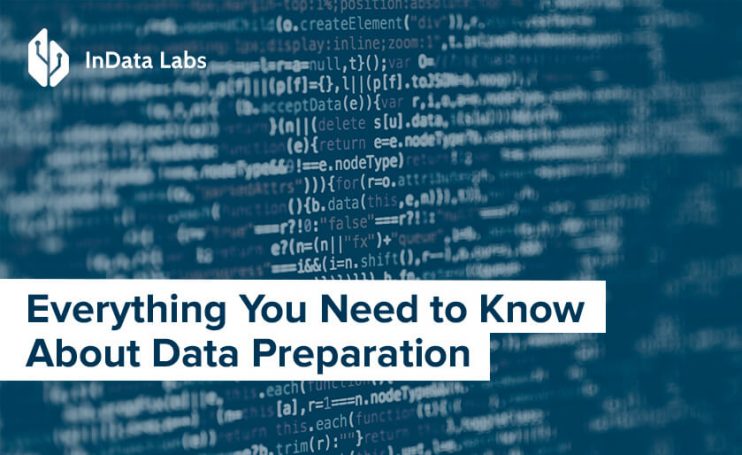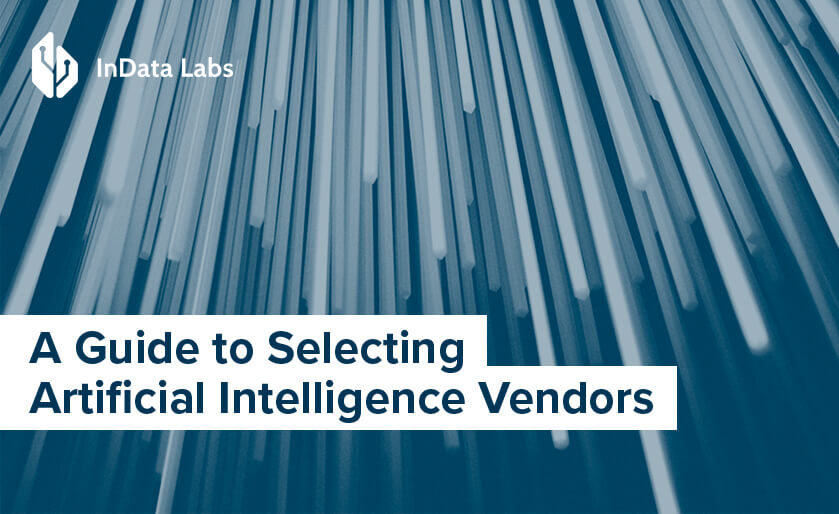The fact that data is now called the “new oil” is true. There is considerable money being made by the ones who are cleverly utilizing it. Fundamentally, big data is unlike oil. With the help of machine learning, It provides a lot more than just profit – it offers understanding and insight, with one exception being that it must be in the right hands for all of this to be possible.
In its purest form, data is raw and messy; from the get-go it will seem unusable. To bring it to the right format, one will need to roll up their sleeves and prepare for a lot of work. For this purpose, all the activities undertaken to make the data “neat” enough are as integral as the algorithms one’ll be choosing to work with. In real world scenarios, this process is called data wrangling, and it is a prerequisite with significant time spent on cleaning the data.
But before any organization or company gains insight and understanding from the data they possess; they must organize it first so it can be made ready for analysis. And that’s where they need data science and AI. This is where data preparation for AI is needed. Although it is usually carried out using data preparation software, it is best to understand what data preparation for analytics is in its entirety.
What Is Data Preparation and Its Steps?
To put it simply, data preparation for machine learning revolves around the collection, consolidation, and cleaning up of data, before the data can be used for other useful purposes. It is a process based on artificial intelligence that holds significant value, as without the help of data preparation process steps, there may probably never be any beneficial use case of data. Organizations all over the globe depend on utilizing data for their benefit, and data dependency spans across every imaginable industry and field including information technology, finance, pharmaceuticals, energy, science, food and hospitality, and more.
Data preparation is highly critical for those who need to:
- Combine the data that is gathered from multiple sources, including cloud databases, web pages, documents, reports, etc.
- Correct issues and artifacts that are imported from any unstructured sources such as PDFs
- Bring unsorted and non-standardized data to order
- Find & replace inconsistencies and duplicates, such as combining similar terms (for example, “Street” and “St.”)
In a typical data preparation process, data is gathered from several sources, identifying issues in the information and taking care of them. The data is then repackaged for usage by analytical tools or third-party applications and users.
Whenever someone uses the term “runs on XYZ data”, what they’re actually referring to is the dependency of “ordered data” to the process. This is where data preparation is pivotal as it turns scattered information into actionable insights.
Why Is Data Preparation Important?
Data preparation for machine learning is basically the first step taken towards processing the given set of data so that it can be used for analytical purposes, or something more useful.
Apart from that, another aspect of the “data and oil” comparison which can be validated is that organizations often discover themselves to be sitting on untapped resources that they’re unaware of having. In fact, according to studies, an estimated 73% of available data across companies globally is usually wasted as it is considered useless without being prepared.
It is obvious that organizations and companies are mostly unfamiliar with the value of information they possess, which is available to them through processes such as:
- Equipment failure and downtime rates
- Keyword and webpage performance
- Throughput of product across distribution warehouses and hubs
- Consumption of energy by various equipment and processes
- Market and competitor research, such as pricing fluctuations and demand
- Patterns and correlations in characteristics and user behaviors
With that being said, not all the data that a company has can prove useful. However, a significant amount of it may never prove to be useful as it is unstructured or has never been made accessible by the departments that have compiled it.
Of course, the process where data must be gathered, restructured, and corrected from several sources within an organization can seem daunting at first. Nevertheless, using effective machine learning solutions can unlock potential insights into how well a company’s assets or workforce are performing and what is the likelihood of different events disrupting their growth. It can further identify bottlenecks as well as opportunities for growth.

Source: Unsplash
Regardless of all these points to ponder, companies require the correct approach to getting data preparation right. A preparation software can also prove to be an essential tool for compliance or transparency, with measures being stressed to regulate social media organizations and data brokers more strictly.
No matter how amiable the intentions may be, gathering and retaining critical information is a lucrative prospect with fines and regulatory scrutiny on the cards if there’s not enough care.
The Most Effective Approach to Data Preparation
There are basically two methods to data preparation. One is the manual approach and the other is the automated one. The manual approach, called “spreadsheet wrangling”, requires considerable time and resource investment. On the contrary, automation, such as the use of data preparation software, is the preferred option by most organizations. However, the pros and cons of the chosen solution need to be judged firsthand.
Regardless of the end-use of the dataset on hand, preparing it requires stakeholders to have answers to the below mentioned questions before the process can be initiated:
- What problem needs to be solved?
- What question requires being answered?
- What sort of data will be useful for solving the problem and answering the question?
- Is that data actually available in the unstructured information? Where would it be located most probably?
Any project for preparation largely follows a similar blueprint, requiring the same degrees of cooperation from those who are handling the provided data, as well as those that will be using it to make business decisions. On top of this, the departments that generated this information also play a pivotal role.

Source: Unsplash
Below are some key considerations in every step of this process:
- Discovery: Whether the process is being automated or not, the most important step is knowing what kind of end result will be best suited to serve the problem at hand.
- Cataloging: Step one mostly leads to the creation of cataloging, which details the kind of information at hand and the place that it came from. With more discoveries made throughout the process, the catalog needs to be updated accordingly so that the users can find data again later on.
- Refining and cleansing: This is the step wherein data will be purged of errors that should not be processed into the final package.
- Distillation and blending: At this stage, any commonly substituted terminologies as well as duplicate entries are accounted for to ensure they don’t lead to abnormalities in the final output. The process of distillation also involves application of custom quality regulations through automation.
- Documentation: This is important in the event that other parties will be using the same set of information for any further projects in the near future. In any catalog, metadata typically includes details on inter-database relationships, business terminologies, source information, technical definitions, along with a set of changes that were done to the data during the process of distillation.
- Reformatting and packaging: Perhaps the most important of all, this step ensures that companies can use the prepared information for any number of procedures and tools that interact with the data once it is discovered. The resultant package needs to be ready for importing onto other solutions for further manipulation.
How Data Preparation Software Prove Useful
Companies all over the world can leverage the potential of data, albeit on a smaller scale. However, where most businesses struggle is not knowing how to begin. The only advice to such companies is to get organized, and make use of machine learning advantages. Without having a proper strategy to organize, it is impossible for businesses to put any form of data to its effective use. Many companies all over the world still struggle or waste countless precious hours simply trying to make their raw, unstructured data more useful to their benefit.

Source: Unsplash
The process of analyzing information for business is simple. It needs to begin with information that is high quality. Since the process involves inter-departmental cooperation; attention to detail, along with a clear understanding of the problem that needs to be rectified, is necessary. More importantly, it also requires the best data preparation tools that can carry out all of this.
To get it right, it is necessary to extract value from the information. This value can be anything from answers to questions, or discovery of new ways for reaching customers, as well as insights to optimize performance, decrease waste, and more. As per the industry, the benefits that it can bring vary and can be numerous.
Since each of these business goals is crucial for a company’s success, it is imperative that minimum time and resource investment is required. On the contrary, in companies that are functioning without automated tools, data analysts and scientists report 80% of their work hours are spent doing preparation instead of analysis. In such cases, self-service data preparation tools come into consideration.
There are several questions that need to be answered before you can decide. Does your team have sufficient time for carrying out the process thoroughly? What if your data analysts and data scientists need to invest their time on more productive tasks rather than wasting their precious hours on preparing data, which can otherwise be automated? If you have plenty of problems to be solved, you might think of the benefits of data science in business.
This is exactly where a self-service data preparation software can prove itself handy. With the help of a platform having ML enabled properties to simplify data preparation, a considerable chunk of in-house data resources can be saved in a company. On top of this, any data preparation software which is worth the investment, will be useful for those business professionals who don’t have necessary IT skills required to carry out the data preparing manually. This makes the process easier as well.
- The most important and notable features that a data preparation tool should possess can be summarized in the below pointers:
- Discovery and access from any provided dataset – from CSV and Excel files to cloud apps, data lakes, data warehouses, and other similar sources
- Enrichment and cleansing functions
- Data visualization, smart suggestions, profiling, standardization, auto-discovery, etc.
- The functions for exporting to other files (Cloud, Excel, etc.) along with controlled export options to enterprise apps and warehouses
- Shareable data sets and data preparations
- Productivity and user friendly features such as versioning, automatic documentation, operationalizing towards ETL processes, and more.
Final Thought
In the real world, data is discovered split over several sets across multiple different formats. Even though nobody likes the prospect of raw, unstructured information; the fact is that all these problems need to be resolved that come associated with it. The better you are prepared to structure that data, the more successful you’ll be in putting that data to use.
In short, data preparation is a task that is best left to the expertise of a data preparation software that will not only automate the entire process, but also provide valuable ROI by taking care of all the consequences that come with data preparation.
Javeria Gauhar, an experienced B2B/SaaS writer specializing in writing for the data management industry. She works as Marketing Executive, responsible for implementing inbound marketing strategies. She is also a programmer with 2 years of experience in developing, testing and maintaining enterprise software applications.
Let’s Develop Big Data Solutions Together
Schedule a call with our tech team to discuss your ideas.



